All about Italian greyhounds
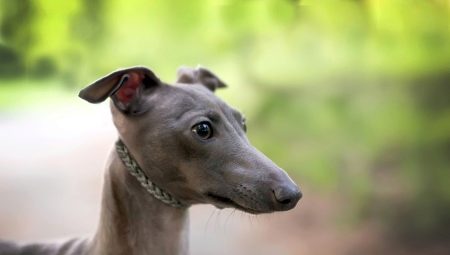
Italian greyhounds are miniature greyhounds that received sophistication and good running speed from their ancestors. A modern description of this breed of dog allows you to get an idea of its exterior and character. But only their owners can appreciate the Italian greyhounds. These temperamental animals require a lot of attention and willingly give their love, becoming wonderful companions on walks and companions. Their exquisite appearance underlines their aristocratic origins, but what really lies behind the beauty and grace of a small dog?
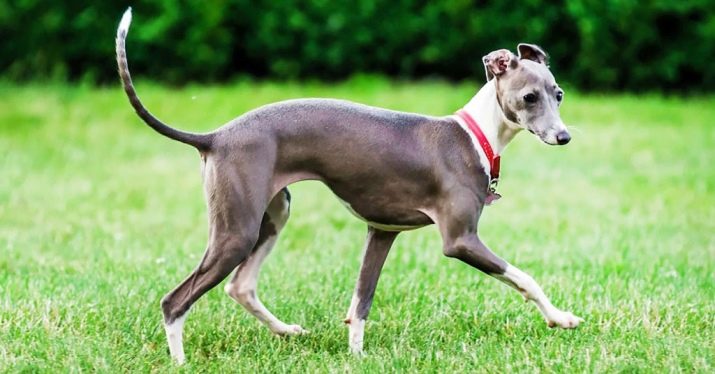
History of the breed
Refined appearance and become Italian Greyhounds (or, as they are preferred to be called in the international arena - piccolo livriero italiano) comes from the compact dogs of Ancient Egypt. It was to that era that the first known images of animals with a fragile physique and an elegant head are attributed. The first owners of these dogs were the pharaohs - it is not surprising that the craving for palace luxury is in the blood of the Italian greyhounds.
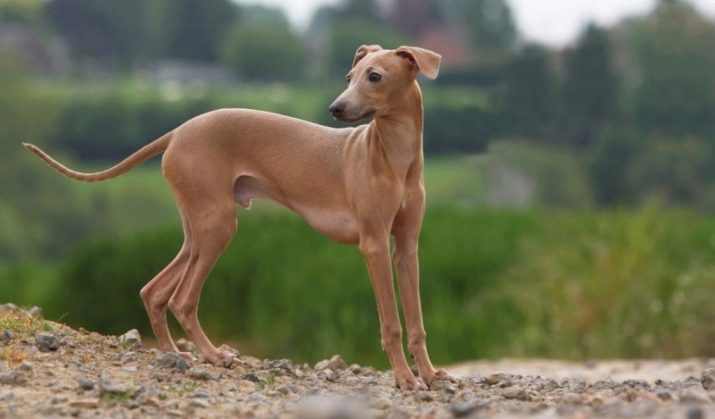
Gradually, the fashion for miniature greyhounds spread to the European continent.
The Greeks were among the earliest worshipers of Italian greyhounds outside of Ancient Egypt., and then representatives of the ancient Roman nobility took up their selection. In the drawings found in Pompeii, the silhouette of the Italian greyhound is also quite recognizable. Although her ancestors at that time still had some differences with the modern breed standard.
The real peak of popularity of miniature greyhounds came in the Renaissance. There was an unspoken competition among the European nobility for the possession of the most beautiful and sophisticated dogs. They were depicted in portraits of kings, kept in packs, and even taken to hunt small game, hares. Representatives of the Italian Medici dynasty made the Italian greyhound their constant companions. And the Prussian king Frederick the Great glorified the loyalty of his pet, who did not give a voice at a time when its owner was in danger of being exposed by enemies.
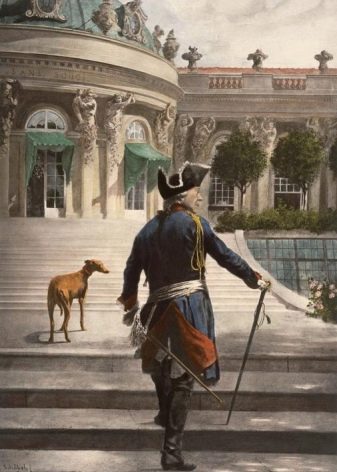
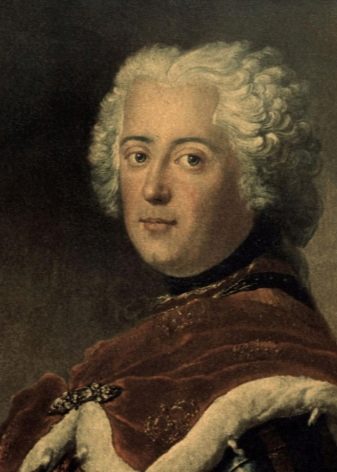
Such great painters as Durer, Titian, Van Dyck considered it an honor to depict the Italian Greyhound on their canvases. But the fashion for Italian greyhounds, no matter how long it was, turned out to be a passing phenomenon. By the beginning of the 19th century, the demand for the breed dropped sharply. Breeders, in an attempt to regain their former popularity, began to deliberately reduce the proportions of an already medium-sized breed.
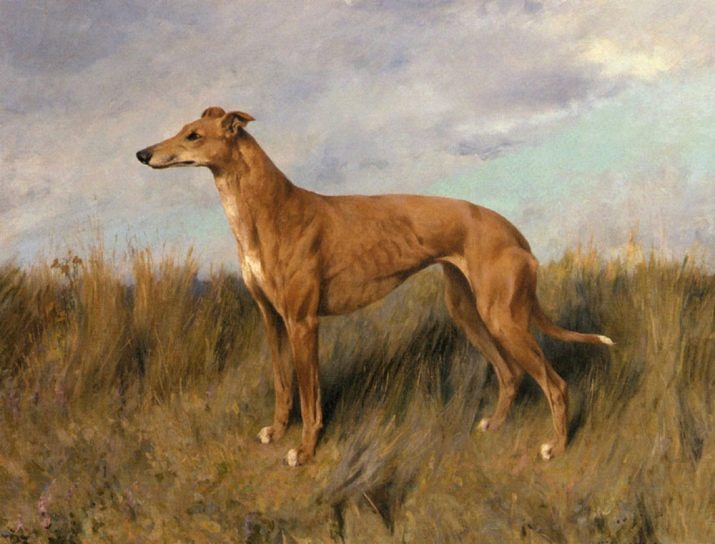
The distortion led to the formation of a type of appearance that is considered obsolete today.
A disproportionate build with a strongly arched back, an apple-headed head, excessively dry and thin limbs, obtained as a result of such "selection", was accompanied by mental disorders in dogs. The animals were too nervous, prone to hysterical behavior. Similar breeding experiments continued until 1873, when an official standard was adopted by the English Kennel Club. The miniature version of the Italian greyhounds was recognized as an old-type one; stronger animals with a proportional physique were considered the norm.

The 20th century did not bring much growth in popularity to Greyhounds. But by the 30s, breeders were serious about reviving the former glory of the miniature Italian greyhounds. In modern Italian greyhounds you can find the blood of dwarf pinschers and whippets. In Russia, the breed was known back in the days of Peter I. But in the Soviet years, its demand, like other decorative breeds, was rather low.
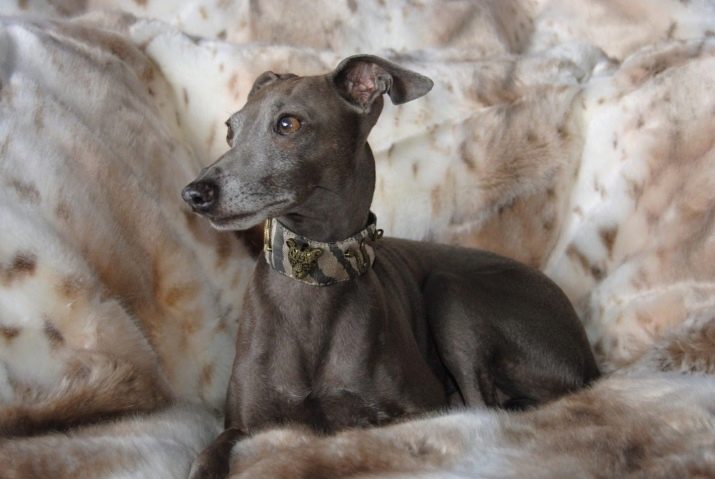
A new round of popularity came in the 70s, when a new livestock was imported into the country from Italy. Since then, the breeding of Italian greyhounds has been quite active.
Description
Italian Greyhound is a typical greyhound, but in miniature. These dogs remain playful throughout their lives, have a good disposition, and are not prone to obesity. A distinctive feature of mini-greyhounds is a small tremor, which manifests itself during hypothermia or extreme nervous excitement of the animal. Dwarf Italian Greyhounds live up to 13-14 years old, they feel best when paired with a companion of the same breed - this eliminates the need for the owner to constantly be in close contact with the pet.

Wool and color
The breed standard implies rather strict restrictions on the shade of the animal's coat. Black, gray, isabella (beige-yellow) tone is allowed, white color can be present only on the paws and chest. Variations on the theme of primary colors are also possible. Gray at puppyhood can lead to blue (there is no such name officially), black - to bronze, with a chocolate tint on the sides.
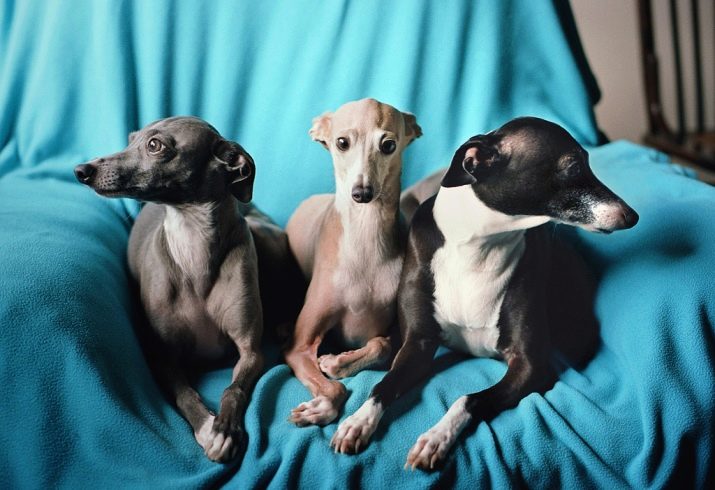
The final version is acquired only by the age of 1-2 years of the dog, the first puppy molt occurs before the age of 4 months.
FCI and RKF accept only canonical versions of colors. But national organizations from Canada, England, the United States and some Asian countries allow wider labeling, dividing all shades of wool into the following subspecies:
- solid (or monochromatic), without white markers, only brindle color is impossible;
- irish - pronounced white collar and colored body;
- wild irish - in addition to the classic Irish markings, there are white spots on the legs, body;
- pied - colored spots on a monochrome snow-white background, the head is often brightly colored;
- ticking - a speckled line, its signs appear with age;
- split face - only half of the muzzle is painted in the basic tone.

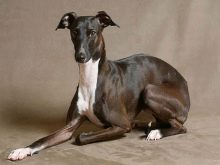
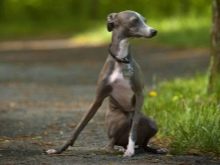
It is important to consider that the breed has manifestations of albinoism. In this case, the dog will be deprived of hair pigmentation. Otherwise, it is impossible to obtain a pure white color - spotting will always be present. The breed is prone to alopecia with weakening of coat shades. Initially, guard hair is not coarse, very short, evenly distributed in density, without undercoat.
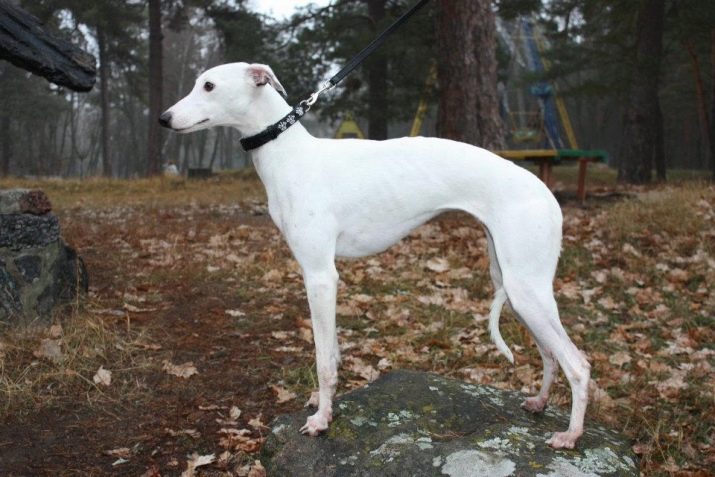
Appearance and physique
The official breed standard is describes its representatives:
- body weight no more than 5 kg, height at the withers from 32 to 38 cm;
- the body is square, dry, with a straight back, which has a slight bend in the lumbar region, the croup is wide, the chest is narrow, deep, reaching the elbows of the dog;
- the neck is typical for Greyhounds - muscular, cone-shaped, with a pronounced bend, the transition to the withers is sharply outlined, a slight bend of the neck can be traced at the throat, without sagging skin, formation of folds, all lines are clearly pronounced;
- the head with a characteristic sharpness of the muzzle, narrow and flat, the superciliary arches are pronounced, the feet and the occipital part are smoothed;
- the jaw apparatus has an elongated shape, the teeth are strong, white, closed in a scissor bite;
- the nose is well-defined, with a brightly colored dark lobe (black pigmentation is encouraged, brown for isabella);
- eyes of a dark brown shade, with bright black eyelids, have a rounded shape, landing of medium depth, without excessive bulge;
- the ears are miniature, on thin cartilage, the tips are deflected back, in an excited state the dog puts the base vertically;
- the limbs are dry, erect, with moderately developed muscles, the elbows are not inverted, the hind legs are more graceful than the front ones, the thighs are elongated, the legs are oval, compact, with small pads;
- tail set low, long and thin, curved at the tip, uniform coat.
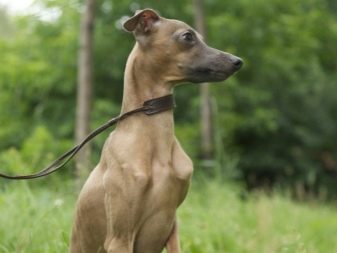
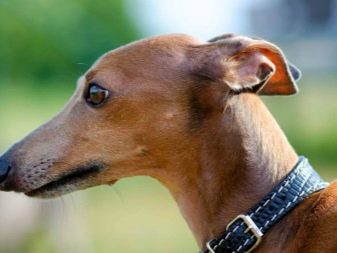
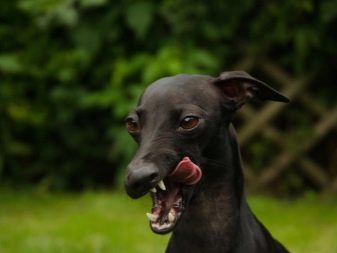
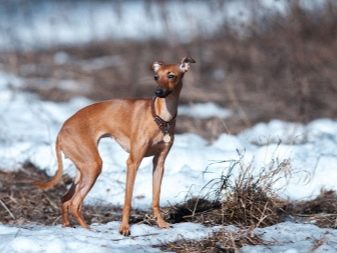
Such defects and malformations as depigmented lobe and eyelid, pronounced bridge of the nose, and malocclusion are not allowed in Italian greyhounds. It is considered unacceptable to set the tail high - above the back, as well as its insufficient length, shorter than the hock. Gigantism and dwarfism in Italian greyhounds are carefully discarded. Preservation of dewclaws, the presence of a thorn in the eyes is excluded.
Dogs with pronounced cowardice or aggressive behavior are considered a breeding marriage.
Advantages and disadvantages
Like any other breed, Italian greyhounds have their merits and demerits. The decorative mini-greyhound has a valuable set of positive qualities.
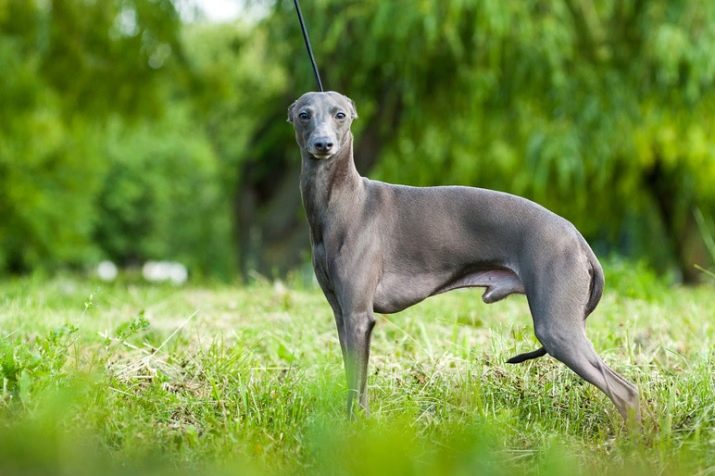
- Sociability. Even taking a teenager, you can get a loving pet. Dogs of the Italian greyhound breed get along well with other pets, but do not like too large dogs.
- Convenience in content. The beauty salon, in which the love of luxury has been cultivated for centuries, will support the owner in the desire to lie on the couch and will be glad to active games while walking.
- Good character. In the absence of malformations, the owner receives an exceptionally affectionate pet, always in a good mood.
- Willingness to follow fashion. The short coat makes the Italian Greyhounds hostage to warm blankets and overalls in winter. But many owners like the opportunity to dress up their pet. And a properly equipped dog feels very comfortable on a walk.
- The presence of decorative and working lines. You can choose both an exclusively sofa dog and a serious athlete aimed at winning short and long distance races.
- Minimal difficulties with leaving. Molting is almost imperceptible, the dogs are neat, the coat does not smell. Easy to toilette.
- Compact dimensions are convenient when living in an apartment. The dog does not need suburban spaces or an aviary.
- Longevity. With good care and good genetics, Italian greyhounds easily celebrate their seventeenth birthday.
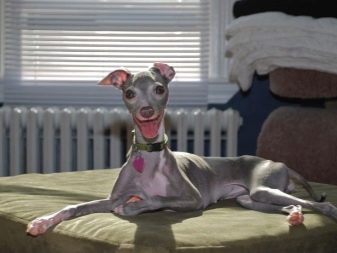
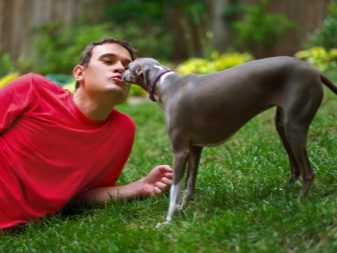
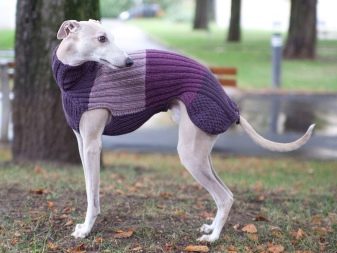
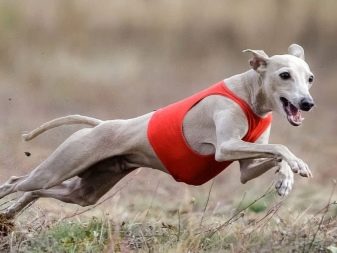
There are also downsides. In very cold climates, an active and cheerful Italian greyhound can turn into a completely domesticated dog. There are a number of health problems - puppies have fragile bones, and a bad jump can lead to a fracture. Their graceful physique makes animals unsuitable for rude, unceremonious treatment. If there are small children in the house, they will have to be taught to interact with the pet.
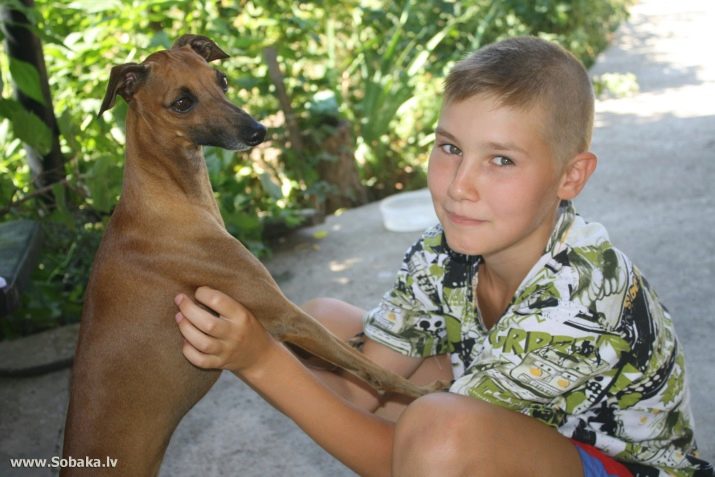
Among the shortcomings of the Italian greyhound, one can also note the tendency to succumb to panic in a critical situation, which is characteristic of choleric people. It is worth letting your pet off the leash for a walk only after completing the training course and with full confidence that he knows the way home. Italian greyhounds are not suitable for people who minimize the expression of feelings - with this dog close communication, hugs and the willingness to share a blanket at night become the priority rules.

Character traits
Describing the character traits of the Italian greyhounds, all cynologists and breeders note their similarity with the larger representatives of this group of hunting dogs. Despite the external fragility, animals are hyperactive, prefer to express their emotions as intelligibly as possible, and can show fearlessness. The Italian greyhound comes to a state of nervous excitement instantly - at the sight of a favorite toy or the owner returning from work.
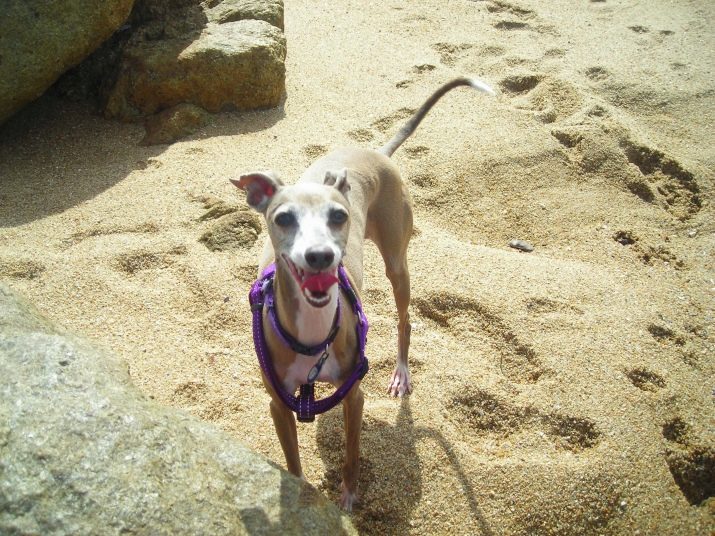
With such a dog, the owner has almost no chance of being left alone.
Do not succumb to the charm of the pet's aristocratic appearance. Italian greyhounds, like any other Greyhounds, are born hunters, dogs capable of causing chaos almost out of the blue. They also require an active attention of the owner - not just hugs or stroking, but games. Representatives of the breed retain such character traits until old age.
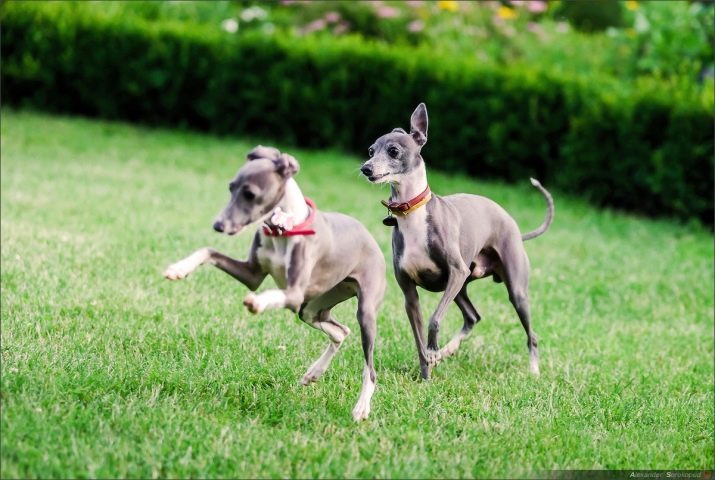
Hyperactivity
Italian greyhounds, despite their diminutiveness, are quite capable of comparing with large dogs in terms of the degree of destruction. Moreover, puppy pranks (due to late growing up) continue for them up to 1.5-2 years. During this period of time, you can expect such troubles as chewed furniture, bags, shoes and clothes, wallpaper torn to shreds on the walls, and eaten wires. Keeping two dogs at once helps to reduce hyperactivity in relation to interior items - busy playing with each other, they will not spoil the atmosphere in the house. Another option is to provide the animal with a sufficient amount of physical activity.
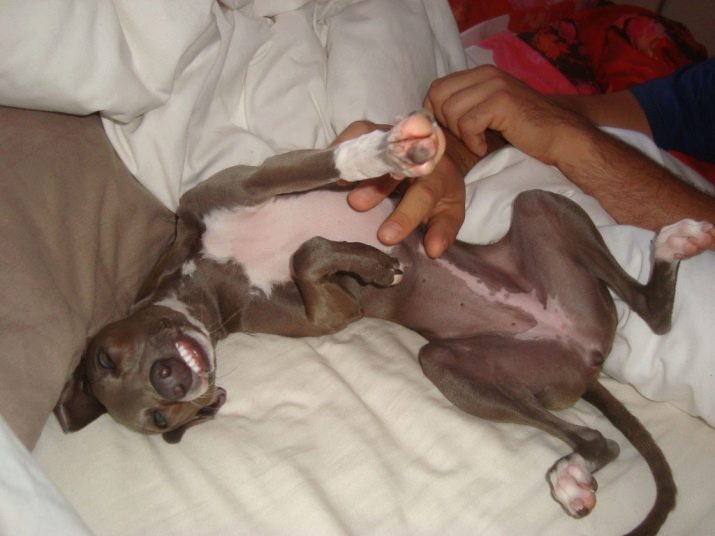
Sociability
In terms of sociability, the Italian greyhound has practically no competitors. This miniature dog easily finds friends, gets along well with cats, as well as its small and medium-sized brethren. For a child of primary and secondary school age, the Italian greyhound can become a devoted companion, companion in games and entertainment. The breed is not aggressive towards children, gets along well with them, and its willingness to show love can warm the heart of an older person.
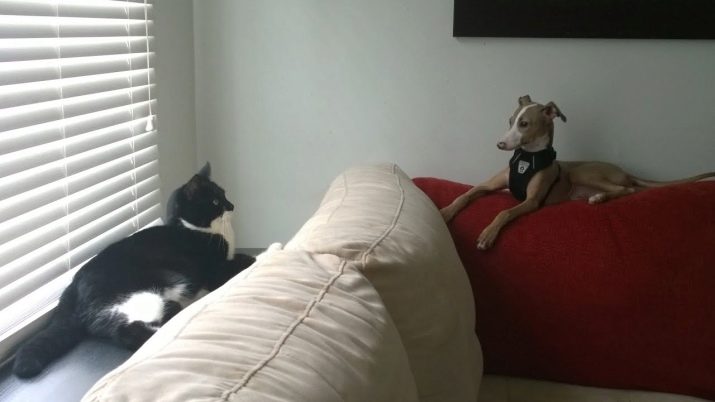
Despite the general sociability, the instincts dormant in the Italian greyhound do not allow her to calmly coexist with feathered pets and rodents. Their dog will always try to catch up and bring the owner as a trophy. Moreover, the rule applies not only to rats and mice.
Italian greyhounds were bred to hunt hares, so larger rodents are also included in the list of their interests.
Main characteristics of behavior
In their habits, Italian greyhounds are surprisingly similar to domestic cats. For rest, they choose observation posts on a hill, try to stay close to heat sources. Chairs, armchairs, bedside tables, window sills - this is where you will have to place the bed chosen for the pet. In extreme cold, the dog will completely prefer the company of the owner, climbing under the blanket.
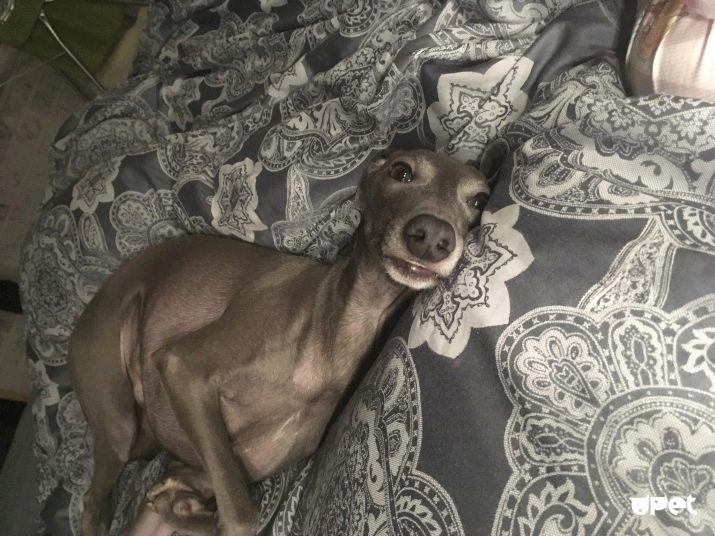
On a walk, the Italian greyhound pedantically bypasses puddles and mud, in heavy slush or rain it will prefer to stay at home and relieve its natural needs in the tray.
While on the street, you should carefully monitor your pet, if possible, do not let it off the leash. Good eyesight and hunter instinct often plays a cruel joke with these dogs, forcing them to pursue prey, despite the protests of the owner. It is worth preparing in advance for emotional communication with your pet. Voiced barking and squealing are natural manifestations of the feelings of a small dog.

Leadership qualities are an unexpected character trait of the Italian greyhound. But the Italian greyhounds are really great commanders. Suffice it to say that if there are several dogs in the house, the leader of this pack over time will be a miniature Greyhound, and not at all the larger and stronger members of the team. The Italian greyhound also twists ropes from the owner, easily achieving what he wants.
But with the right approach to training, this moment will not cause much inconvenience.
Conditions for keeping
What conditions of detention are required for an Italian greyhound? In her behavior there is a lot of feline habits, therefore, preparing the house for the appearance of a puppy, it is worth considering the breed's needs for comfort. If the proper conditions are not created, the animal will choose its place in the house exclusively the space near the owner's side, under the blanket, and will not give it up to anyone.
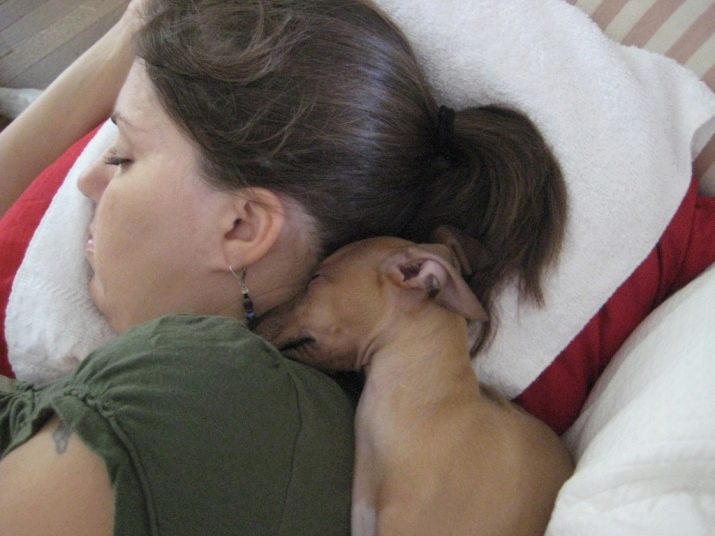
For relaxation, it is worth giving the Italian greyhound her own apartment - a house with a soft pillow, a spacious basket with high sides. Dogs love to watch the street from the window. It is worth giving your pet a personal windowsill or arranging a view from a sufficient height. In addition, care must be taken to ensure that the extremely curious puppy or adult dog is inaccessible to any dangerous objects.

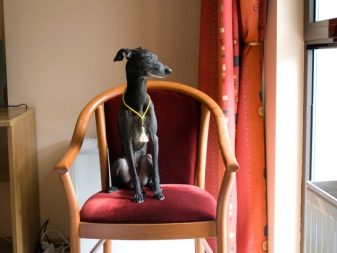
Wires, poorly closing cabinet doors, low-lying appliances - all of this should be removed.
In fact, a lively and active Italian greyhound is a small child in the house, who will definitely try something that cannot be simply thrown around. And you need to treat this side of the animal's life philosophically. Changing the habits of the breed will not work - you will have to take safety measures (many methods and adaptations can just be taken from the experience of protecting property from children).
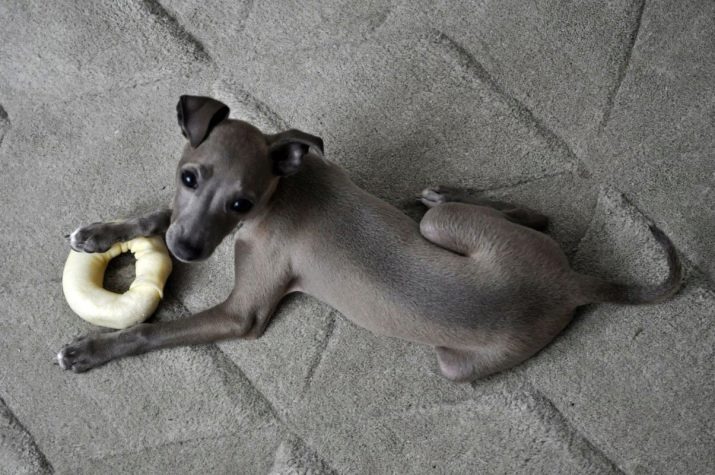
Games and toys are the things without which the Italian greyhound cannot exist. She must be provided with a sufficient number of silicone balls, squeakers, plush animals. It is worth periodically updating the stock of entertainment available to the dog.
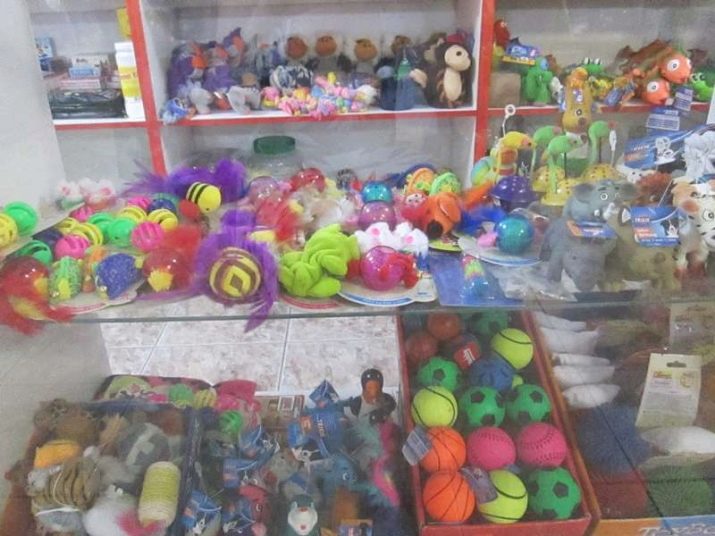
Compliance with the rules of hygiene is not at all the strong point of the breed. Italian greyhounds, even in adulthood, can leave puddles on the floor, forget about the need to visit the tray. The optimal solution for a miniature greyhound will be daily walks, during which the dog will be able to fulfill its natural needs.
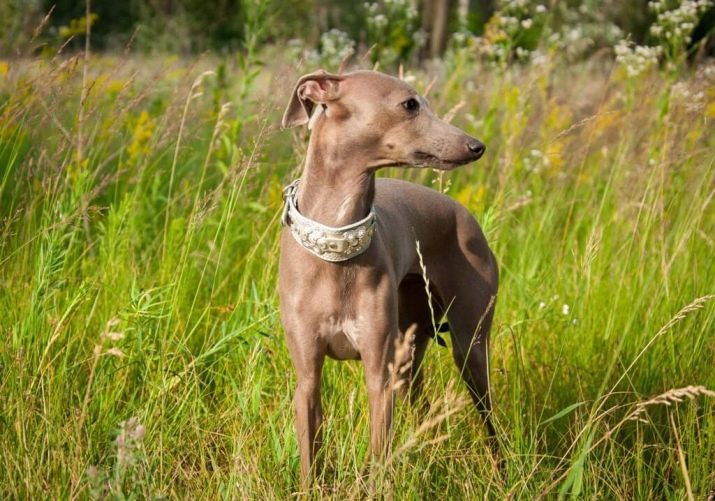
What to feed?
The organization of the Italian greyhound's nutrition implies the preparation of a balanced, complete diet with a predominance of animal protein. Its source can be both ready-made feed - dry or canned, and natural meat. Beef tenderloin is the best choice. Moreover, miniature greyhounds prefer to eat slightly spoiled meat, with films and veins, raw.
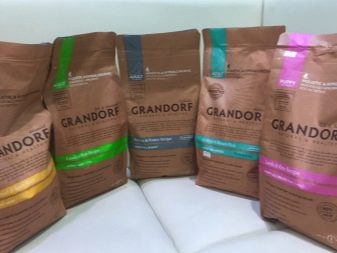
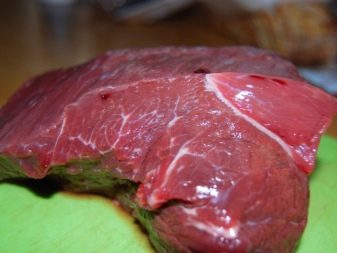
If there is a danger of helminthic invasion, you can subject food to heat treatment, but it is the uncooked version that is best absorbed.
The peculiarities of digestion of the Italian greyhound are such that it is the meat food that it best tolerates. Digestion of a rotten piece is easier than a fresh one. Fine slicing is also not needed. Broth feeding the dog is also not worth it.
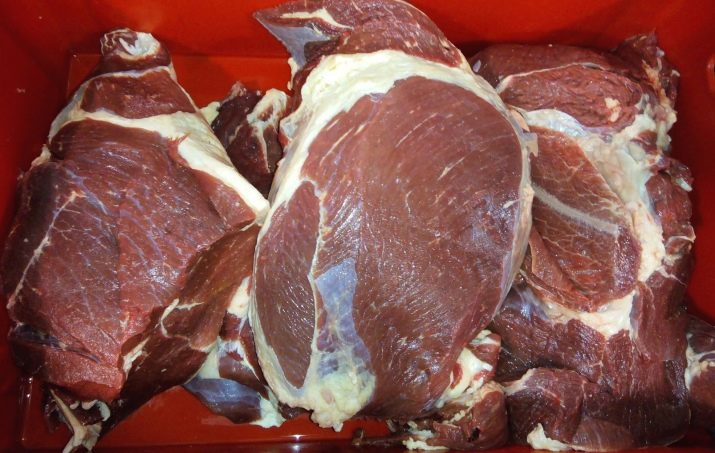
For a change in the diet add lean ocean fish - boneless fillets. It is permissible to use fermented milk products - cottage cheese, yogurt, fat-free kefir. The share of cereals in the diet is no more than 30-40%, they are given separately from meat, so as not to disrupt the digestion process. Vegetables and fruits are given between meals. Legumes are strictly prohibited.
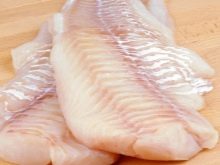
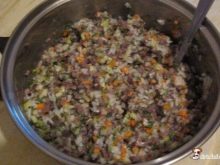

When using a natural diet, be sure to give your pet vitamin and mineral supplements. Your veterinarian will help you to find them. Prevention should be systematic, with the adjustment of the composition of vitamins taking into account the season.
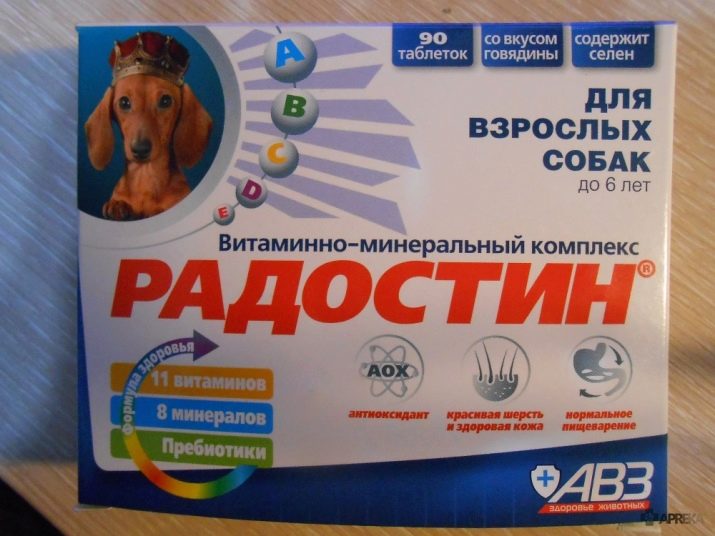
How to care?
Italian Greyhound is a breed that is not too demanding to care for. The dog practically does not shed, the absence of undercoat eliminates the appearance of an unpleasant odor. From time to time it is recommended to bathe the animal with special products for smooth-haired breeds or remove contamination with hypoallergenic wipes. Paws are washed after each walk, it is worth teaching your pet to this procedure as early as possible.

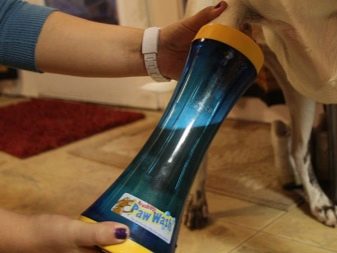
Often it is not necessary to clean the ears of the Italian greyhound. They need to be regularly examined, and when dirt accumulates, they should be freed from sulfur and plaque with a soft cloth and a special lotion. The eyes also do not require intense monitoring.

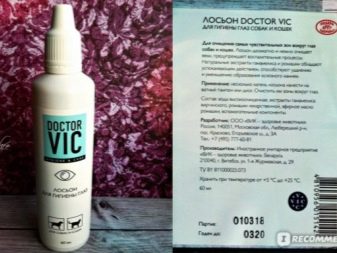
It is enough to periodically pay attention to their hygiene, as necessary, to clean with a cotton pad.
Dental care should be a regular procedure. They are cleaned at least three times a week, with special veterinary pastes. Tartar is removed by a doctor. Clipping is only necessary in winter. In the summer, the dog grinds them down on its own.

Italian Greyhound is an active breed. She needs to walk 2-3 times a day, with the obligatory length of one of the exercises for at least 2 hours. In damp, windy weather, the pet prefers a tray, it should definitely be installed, and the dog should be trained to use it.
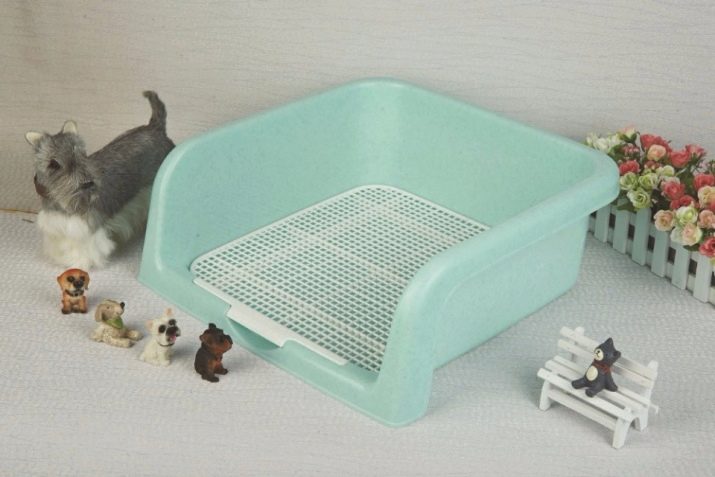
How to choose clothes?
Advice on choosing clothes for owners of Italian greyhound puppies is usually given by breeders. What is better to consider before sending your baby out in the cold? The recommendations of experienced dog breeders are as follows:
- you can switch to a winter wardrobe already upon reaching an average daily temperature of +5 degrees;
- any clothes for an active mini-greyhound should be comfortable, not hindering movement, it is better to choose hypoallergenic materials;
- the first "autumn" clothes - a knitted blanket sweater that covers the pet's neck, chest and back, it can also be worn at home or under a winter overalls;
- for males, wardrobe items must have a special cutout on the belly. It is worth choosing things that lend themselves well to washing, have a replacement kit in case one gets dirty;
- a blanket with a hood is another indispensable accessory, they are easier to put on than full overalls, the dog's paws remain open, but at the same time a good barrier is created to protect against cold weather;
- hats are an important part of the Italian greyhound's wardrobe, delicate ears need insulation and protection from frostbite.
- the jumpsuit can be knitted (under the blanket) or full-fledged, very warm, with tight-fitting cuffs.
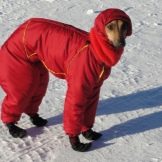
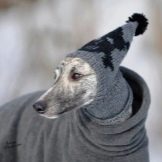
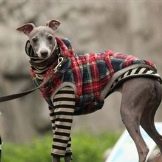
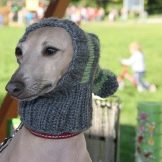
Education and training
Education plays a very important role in taming a pet's oppressive nature. The Italian greyhound easily compensates for the lack of zeal in learning with the tenacity of the mind, easily navigating the mood of the owner. It is unlikely that it will work to train her in the classical sense of the word.
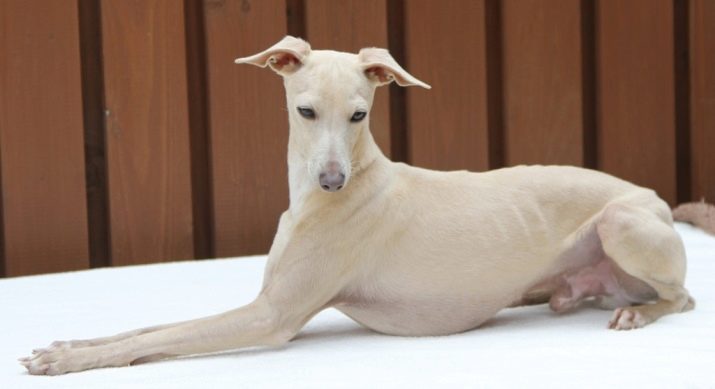
But you can instill in your pet the rules of behavior that allow you to comfortably coexist with him in the same space.
It is worth starting training from the first days of the puppy's stay in the house. He must learn the location of the couch, toilet, bowls. In no case should the Italian greyhound be allowed food from the master's table. No matter how plaintive the puppy looks, it is better to send it to the place when people eat it.
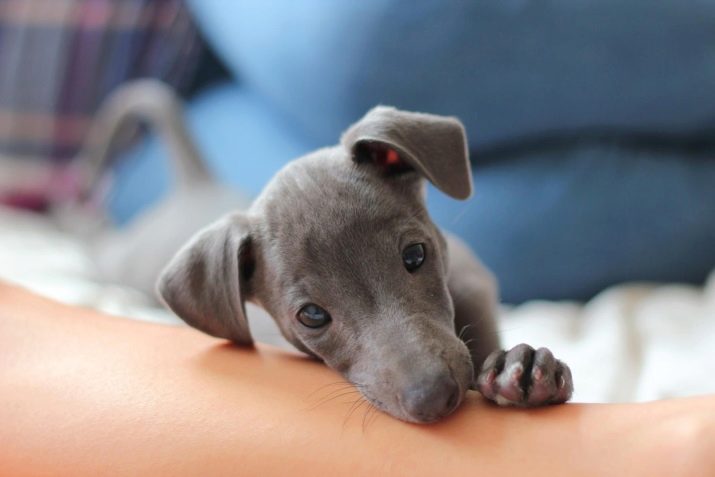
There is no need to hope for quick success in training. Natural obstinacy leads to the fact that the Italian greyhound, even understanding the command, is in no hurry to carry it out. Even a delicacy will not help - you will have to negotiate with the pet on all points, from visiting the tray to mastering the owner's orders. But if mutual understanding is achieved, the Italian greyhound may well turn out to be an ideal pet and a true friend.
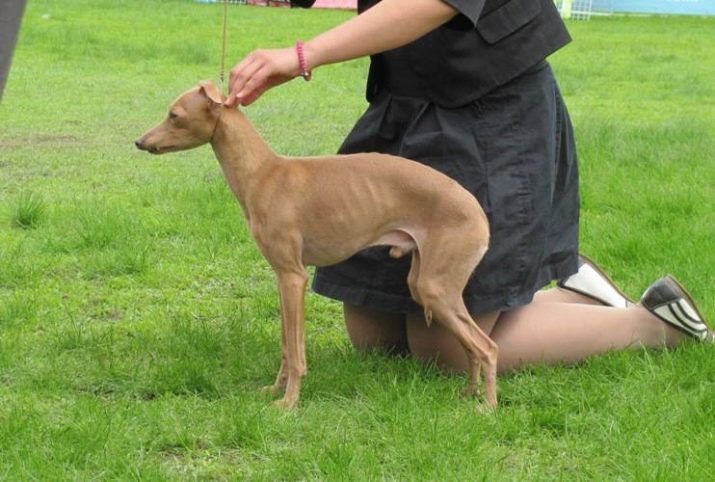
Training
It is important to take into account that, like other greyhounds, with due perseverance, the Italian Greyhound quite successfully masters the general training course and can even be used in sports disciplines. They are successfully used in coursing - the pursuit of a mechanical hare, agility, and other types of vigorous activity.
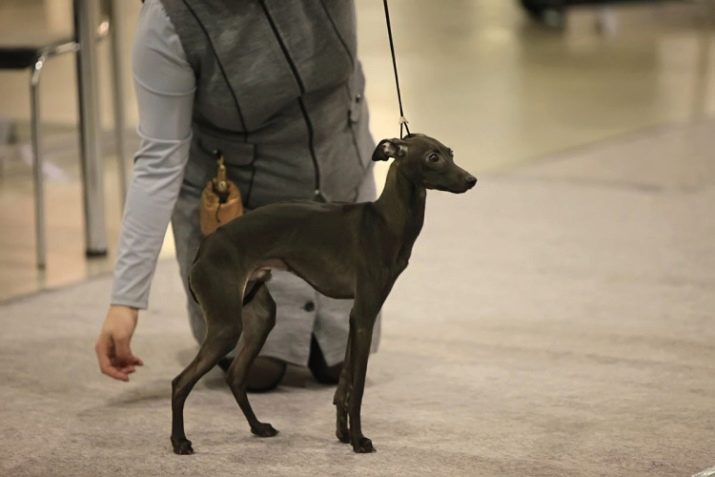
The presence of a goal to be achieved turns the Italian greyhound into what they originally are - fast hunters who are able to drive the game on their own.
What commands should a dog learn without fail? There are seven of them, and each is aimed at protecting the animal from possible danger.
- To me. Knowledge of this command must be absolute. Otherwise, it will take a long time to catch up with the dog on a walk, letting it off the leash.
- Fu / it is impossible. Commands-prohibitions allow you to protect your pet from poisoning, falling, contact with other sources of danger.
- Sit. This skill will help you quickly calm down an overly excitable pet.
- Stand. Another useful command option that can be used to suppress potentially unwanted animal actions.
- Forward. For sporting dogs, this command is the trigger to start running.
- Nearby. If you want to walk with your pet off a leash, knowing this command will be a prerequisite for obedience.
- Take a walk. This team will be appreciated by such freedom-loving dogs as Italian greyhounds. The main thing is that later the pet does not ignore the other requirements of the owner.
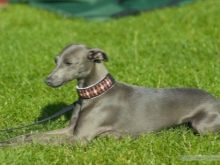
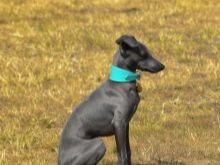
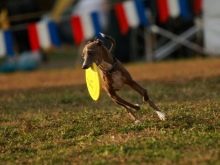
In the process of training, mainly methods of encouragement and restrictions are used. You should not use coercion with the Italian greyhound - to force the dog to act in the way the owner needs. Better to act thinner and train differently. This breed has a strong desire to participate in the life of the owner. Ignoring the animal as a punishment can be a good incentive for educating the dog the necessary skills.
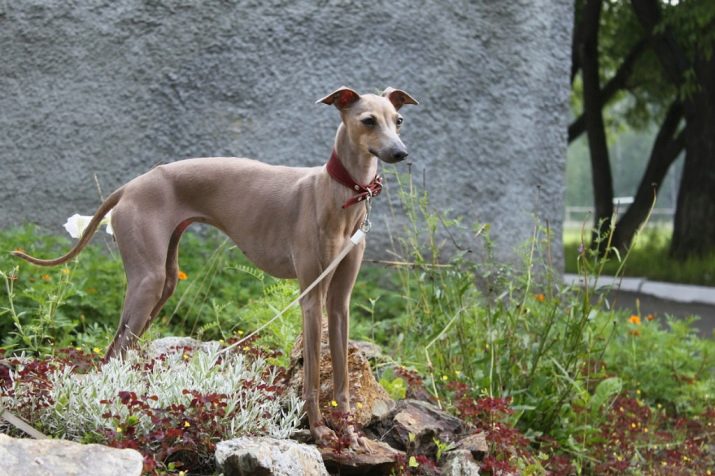
All about this dog breed in the next video.






































